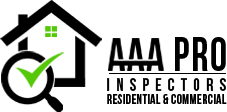Bringing a new baby into your home is an exciting and joyful experience. However, it also comes with the responsibility of ensuring your living space is safe and secure for your little explorer. Babies are naturally curious and love to explore their surroundings, so being proactive about babyproofing your home is essential. Here are some effective ways to create a safe environment for your baby.
1. Identify Potential Hazards Before Babyproofing Your Home
The first step in babyproofing your home is to identify potential hazards. Get down on your hands and knees and see the world from your baby’s perspective. Look for anything that could be a choking hazard, such as small toys, coins, or loose buttons. Check for sharp edges on furniture, exposed electrical outlets, dangling cords from blinds or curtains, and any toxic substances within reach.
2. Secure Furniture and Electronics
Babies love pulling themselves up on furniture, which can lead to dangerous accidents if items are not properly secured. Use furniture straps to anchor heavy furniture, such as bookshelves, dressers, and TVs, to the wall. Ensure all electronics and appliances are safely out of reach or securely mounted to prevent them from toppling onto your baby.
3. Install Safety Gates While Babyproofing Your Home
Safety gates are essential for blocking off staircases, doorways, and other areas of the home that may pose a risk to your baby. Choose sturdy gates designed explicitly for baby safety and install them securely to prevent your child from accessing hazardous areas.
4. Cover Electrical Outlets
Electrical outlets are a major safety concern for babies and young children. Use outlet covers or safety plugs to prevent your baby from sticking their fingers or objects into the sockets. Consider installing tamper-resistant outlets for added protection.
5. Lock Cabinets and Drawers While Babyproofing Your Home
Cabinets and drawers are full of fascinating items that can pose a danger to curious hands. Use childproof locks or latches to prevent your baby from opening them and accessing sharp objects, cleaning supplies, or other hazardous materials.
6. Keep Cords and Cables Out of Reach
Dangling cords and cables from electronics, blinds, and curtains can be a strangulation hazard for babies and young children. Keep cords out of reach or use cord shorteners and tie-offs to secure them safely away from your baby’s grasp.
7. Choose Safe Toys and Play Areas
When selecting toys for your baby, choose age-appropriate options free of small parts and choking hazards. Create a designated play area free of sharp edges and potential dangers, and always supervise your baby during playtime.
8. Be Diligent About Supervision
Despite your best efforts to baby-proof your home, accidents can still happen. Be diligent about always supervising your baby, especially in areas where hazards may be present. Never leave your baby unattended, even for a moment.
Baby-proofing your home is an essential step in ensuring the safety and well-being of your little one. Follow these steps to create a safe and secure environment where your baby can explore and thrive. Remember, it’s never too early to start baby-proofing, so take action today to protect your precious bundle of joy.
Babyproofing FAQs
How do I ensure my baby’s crib is safe?
Make sure the crib meets current safety standards, with slats no more than 2⅜ inches apart. Avoid putting blankets, pillows, and stuffed animals in the crib to reduce the risk of suffocation.
What precautions can I take for emergencies?
Keep a fully stocked first aid kit on hand, learn CPR and basic first aid, and have emergency contact numbers, including poison control, readily available.
Are there any precautions I should take with household plants?
Some household plants can be toxic if ingested, so it’s essential to research the plants in your home and either keep them out of reach or remove them entirely if they pose a risk.
What precautions should I take in the bathroom?
Install toilet locks to prevent drowning hazards, keep electrical appliances unplugged and stored away, and use non-slip mats in the bathtub to prevent falls.
AAA Professional Home Inspectors offers inspection services to homebuyers and sellers in Kentucky and Southern Indiana. Contact us to request an appointment.

